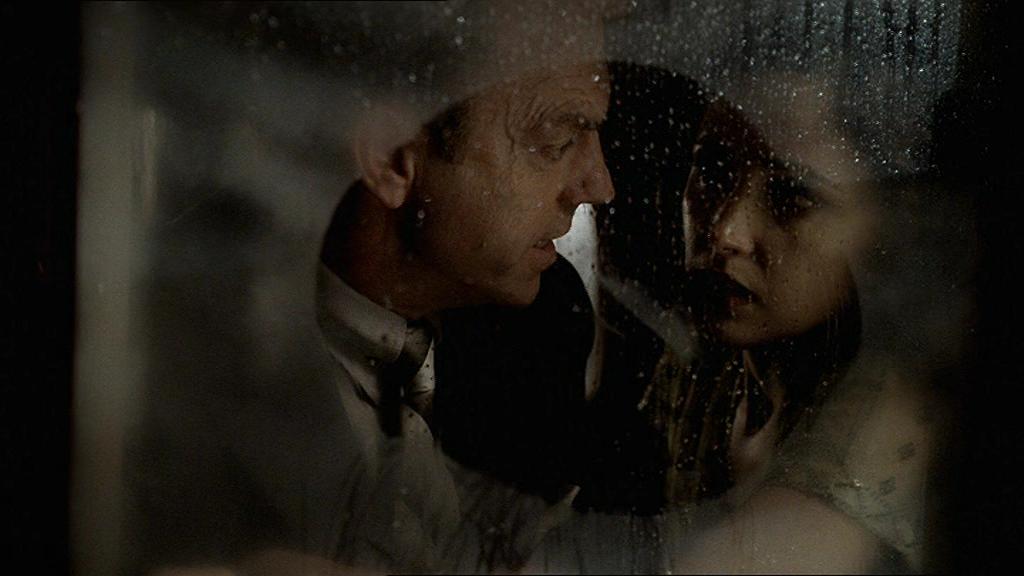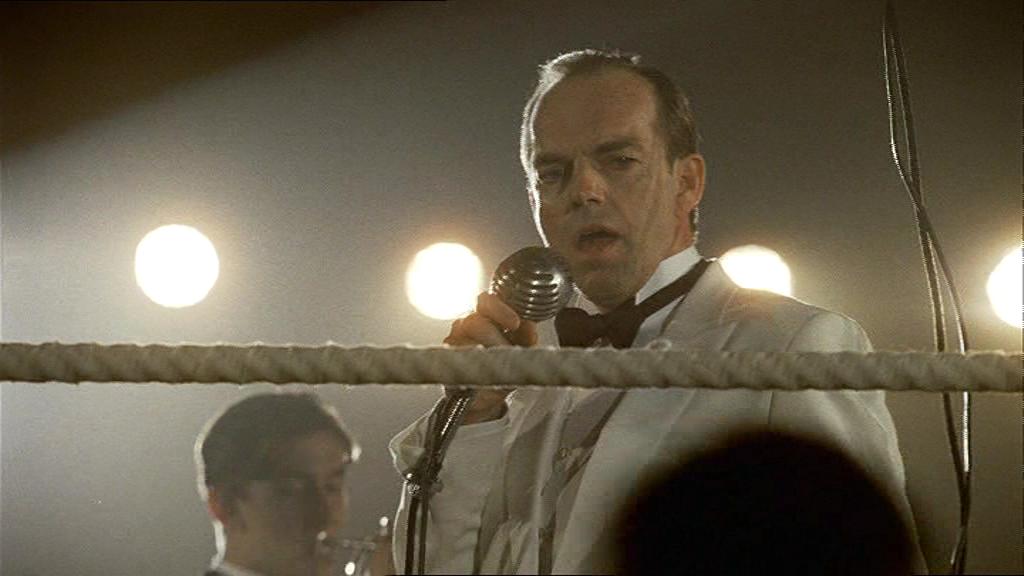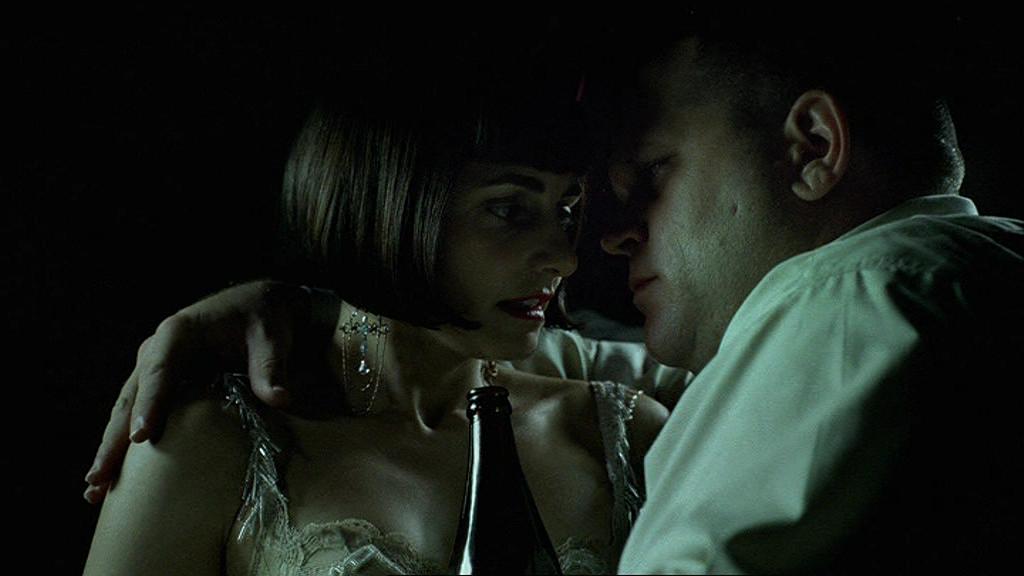Or, Who Killed The Australian Film Industry? Case No. 278. This sorry excuse for a period drama takes a cast and idea with potential – Rose Byrne, Pia Miranda, Hugo Weaving, in a Jazz-era gangster drama – and turns it into a sloppily paced and executed soporific. McHeath (Weaving) is a boxing promoter and gangster and functioning illiterate; for no apparent reason he’s given to singing Bob Dylan and Leonard Cohen songs before bouts.
. .
.
Anyway. There’s a boxer, Art (Matthew Le Nevez, armed with the total personality of a spittoon), who becomes McHeath’s latest protégé, over his unfortunately Aboriginal stablemate Alby (Luke Carroll). McHeath’s flapper moll Iris (Byrne) makes the goo-goo eyes at him. Sexual tension squelches under the surface.
. .
.
Miranda plays Daisy, a friend of Iris’s (these flower girls stick together) who keeps turning up in scenes unannounced. They practise dancing together and talk about “hooking up” with guys. In the 1920s. I stopped counting anachronisms after that. There’s a subplot involving Japanese beer and a backstory of Broome pearl fishermen. I don’t know what it was all about.
. .
.
For some reason that is not exactly (at all) explained, Iris puts cocaine in Art’s lemonade. McHeath thinks he’s a drunk and sacks him. Byrne plots and schemes to help him out again. She’s a big one for the plotting and scheming. Most of which causes trouble. McHeath’s two gunsels, portly Ronnie (John Batchelor) and Russian Donnie (Tyler Coppin), debate bumping off McHeath when he realises their part in one of Iris’s schemes, but Ronnie wimps out when he sees McHeath crying for Iris, after he’s found she’s betrayed him. Finally Iris has to do it herself with a golf club. A lot of practically incoherent scenes get in the road of the ending.
. .
.
Director Jonathan Ogilvie spends a lot of time working with cinematographer Geoffrey Simpson creating some pretty images, but utterly fails to generate a sense of style, which might have compensated for and decorated the wispy, pathetically underdeveloped script; unfortunately Ogilvie’s sense of film grammar, the lack of structuring of the scenes and exposition, is stunningly incompetent. In an early scene, Daisy suddenly appears in the car with the protagonists. How she got there, and indeed who she is, seems to have slipped Ogilvie’s mind. There are many more examples of this sloppiness. Where he chases poetic sparseness, he achieves only wan disinterest.
. .
.
He elicits awkward performances from actors who are normally reliable, badly miscasting Weaving and leaning on Byrne’s ability to project a kind of haunted doll-like humanity whilst saddling her with an incomprehensible character.
. .
.
It might not matter so much if the story had more substantial characters and stronger plotting preferably not stolen from a dozen old noir films, and festooned with witlessly employed pop-art style culture quotes. But it doesn’t. It’s boring. $7 million this cost, apparently. Made back $40,000. And they say Aussie filmgoers have no taste. They do, that’s the problem..
Anyway. There’s a boxer, Art (Matthew Le Nevez, armed with the total personality of a spittoon), who becomes McHeath’s latest protégé, over his unfortunately Aboriginal stablemate Alby (Luke Carroll). McHeath’s flapper moll Iris (Byrne) makes the goo-goo eyes at him. Sexual tension squelches under the surface.
.
Miranda plays Daisy, a friend of Iris’s (these flower girls stick together) who keeps turning up in scenes unannounced. They practise dancing together and talk about “hooking up” with guys. In the 1920s. I stopped counting anachronisms after that. There’s a subplot involving Japanese beer and a backstory of Broome pearl fishermen. I don’t know what it was all about.
.
For some reason that is not exactly (at all) explained, Iris puts cocaine in Art’s lemonade. McHeath thinks he’s a drunk and sacks him. Byrne plots and schemes to help him out again. She’s a big one for the plotting and scheming. Most of which causes trouble. McHeath’s two gunsels, portly Ronnie (John Batchelor) and Russian Donnie (Tyler Coppin), debate bumping off McHeath when he realises their part in one of Iris’s schemes, but Ronnie wimps out when he sees McHeath crying for Iris, after he’s found she’s betrayed him. Finally Iris has to do it herself with a golf club. A lot of practically incoherent scenes get in the road of the ending.
.
Director Jonathan Ogilvie spends a lot of time working with cinematographer Geoffrey Simpson creating some pretty images, but utterly fails to generate a sense of style, which might have compensated for and decorated the wispy, pathetically underdeveloped script; unfortunately Ogilvie’s sense of film grammar, the lack of structuring of the scenes and exposition, is stunningly incompetent. In an early scene, Daisy suddenly appears in the car with the protagonists. How she got there, and indeed who she is, seems to have slipped Ogilvie’s mind. There are many more examples of this sloppiness. Where he chases poetic sparseness, he achieves only wan disinterest.
.
He elicits awkward performances from actors who are normally reliable, badly miscasting Weaving and leaning on Byrne’s ability to project a kind of haunted doll-like humanity whilst saddling her with an incomprehensible character.
.
It might not matter so much if the story had more substantial characters and stronger plotting preferably not stolen from a dozen old noir films, and festooned with witlessly employed pop-art style culture quotes. But it doesn’t. It’s boring. $7 million this cost, apparently. Made back $40,000. And they say Aussie filmgoers have no taste. They do, that’s the problem..
.





















